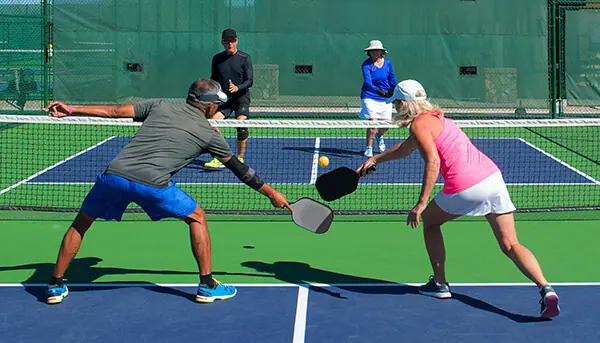Common Orthopedic Injuries from Pickleball and How to Prevent Them
Pickleball, a sport that combines elements of tennis, badminton, and table tennis, has been gaining popularity across the globe. With its easy-to-learn rules and low-impact nature, it’s no wonder that people of all ages are picking up paddles and hitting the courts. However, like any physical activity, pickleball comes with its risks, particularly concerning orthopedic injuries. In this blog post, we’ll explore some of the common orthopedic injuries associated with pickleball and discuss strategies for preventing them.
1. Tennis Elbow (Lateral Epicondylitis)
Tennis elbow, despite its name, is not exclusive to tennis players. It’s a repetitive stress injury that affects the tendons in the elbow and forearm. In pickleball, the repetitive swinging motion involved in hitting the ball with the paddle can strain these tendons, leading to pain and inflammation.
Prevention: To prevent tennis elbow, players should focus on proper paddle grip and technique. Using an oversized grip or an ergonomic paddle can help distribute pressure more evenly across the hand and forearm. Additionally, warming up before playing and incorporating strength and flexibility exercises for the forearm muscles can reduce the risk of injury.
2. Shoulder Injuries
The overhead motions required in pickleball, such as serving, smashing, and overhead shots, can put strain on the shoulder joints and muscles. Rotator cuff injuries, shoulder impingement, and tendonitis are common among pickleball players, especially those who play frequently or with poor technique.
Prevention: Proper warm-up exercises that target the shoulder muscles and dynamic stretching can help prepare the joints for activity. It’s also essential to focus on proper technique, including using the entire body to generate power rather than relying solely on the arm and shoulder. Strengthening exercises for the rotator cuff muscles and maintaining good posture on the court can further reduce the risk of shoulder injuries.
3. Ankle Sprains
Quick lateral movements and sudden stops are integral parts of pickleball, making players susceptible to ankle sprains. Whether it’s reaching for a shot or changing direction to chase down a ball, the risk of rolling or twisting an ankle is ever-present on the court.
Prevention: Wearing supportive footwear with good traction is crucial for preventing ankle sprains. Shoes designed specifically for court sports provide stability and help reduce the risk of slipping or rolling the ankle. Additionally, practicing balance and agility exercises can improve proprioception and lower the likelihood of missteps on the court.
4. Knee Injuries
The stop-and-go nature of pickleball, combined with the repetitive bending and lunging motions, can put stress on the knees, leading to injuries such as patellar tendonitis, meniscus tears, and ligament strains.
**Prevention:** Strengthening the muscles around the knees, including the quadriceps, hamstrings, and calves, can help stabilize the joint and absorb impact more effectively. Players should also focus on maintaining proper alignment and form during movements, avoiding excessive twisting or hyperextension of the knees.
At the Spine and Performance Institute we offer a full suite of services to help diagnose and treat individuals who suffer orthopedic injuries. From in-house xray to IV infusions of vitamins and nutrition, we offer a holistic approach to orthopedic care.
Conclusion:
While pickleball is generally considered a low-impact sport, it’s not without its risks, particularly concerning orthopedic injuries. By understanding the common injuries associated with pickleball and implementing preventive measures such as proper technique, warm-up exercises, and strengthening routines, players can enjoy the game safely and reduce the likelihood of sidelined by injuries. Remember, staying active and having fun on the court should always go hand in hand with prioritizing your physical well-being. Play safe, play smart, and keep pickleballing!

